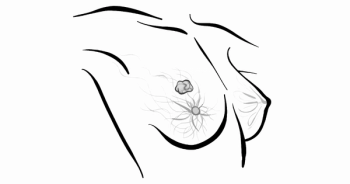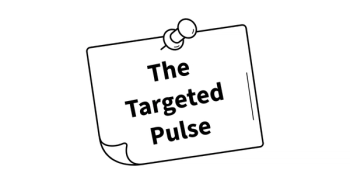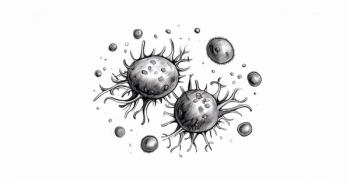
Study Indicates Early Resolution of CRS, Neurological Events After Axi-Cel
Olalekan O Oluwole, MD, MBBS, discussed a study on cytokine release syndrome and neurological events post axicabtagene ciloleucel in large B-cell lymphoma.
For patients receiving chimeric antigen receptor (CAR) T-cell therapy for the treatment of relapsed/refractory large B-cell lymphoma, research presented at the 2025 Transplant and Cellular Therapy Meetings suggests that the most concerning adverse events, cytokine release syndrome (CRS) and neurological events, typically resolve within the first 2 weeks following infusion of axicabtagene ciloleucel (axi-cel; Yescarta).1
Researchers like Olalekan O Oluwole, MD, MBBS, suggest that this classification algorithm for durable resolution could be applied to other CAR T-cell therapies, as CRS and neurological events appear to be a class effect. Overall, the study highlights the importance of early referral for CAR T-cell therapy, which has shown curative potential in some cases.
In an interview with Targeted OncologyTM, Oluwole, associate professor, medicine, hematology/oncology, Vanderbilt Institute for Infection, Immunology and Inflammation, Vanderbilt University Medical Center, discussed this study which aimed to assess the risk of CRS/neurological event recurrence after a minimum of 2 weeks.
Targeted OncologyTM: Can you provide some background on this research and the rationale behind it?
Oluwole: We have been treating patients with CAR T for many years now, and we believe that we are learning how to use them better and how to better treat patients. One requirement at the onset of the program by the FDA was that patients needed to stay close to the academic [center], or wherever they get the CAR T, for almost a month. We know that these CAR T [treatments[ are a one-time infusion, and all the [adverse events] that they cause early on will be really early after the treatment. It seems reasonable to go back and look and see whether indeed we see all these [adverse events] early, or whether indeed we see them for the whole 28 days. That was really the motivation for this study, to try to look back and cluster all the statical release syndrome, all the neurological events, and find out whether indeed they recover early or whether they extend for the whole time.
What methods and design were utilized?
These were patients on a clinical trial that we used as a training cohort. It was a retrospective analysis, looking at patients who had received this CAR T and looking at the times that they developed specific [adverse events], and logging it on a graph to see whether it was maybe in the first day, in the second day, or in the 2 weeks, or in the third week, and interrogate the true period of risk.
What are the key findings that you presented?
The key findings [were] like we suspected from clinical care—that as we have better interventions, as we have earlier interventions, we are able to help patients through the [adverse] effects, and by the end of the second week of treatment, most of the [adverse] effects have actually resolved. Only 2% had any form of recurrence of anything related to cytokine release syndrome. It may not even be cytokine release syndrome.
So, if 98% of patients have the onset and resolution within about 2 weeks, that is huge, because then the remaining 2 weeks, do they really need to stay at the academic center? Or maybe for the ones for whom everything that completely resolved, which was more than half, maybe they could go back to their homes. But those are active areas that will require more research and more interrogation of the data to figure out.
What factors contributed to the decision to define durable resolution as 3 consecutive days free of CRS or neurological events?
Number one, we needed to be doubly sure.. Number two, patients received lymphodepletion chemotherapy, which is fludarabine and cyclophosphamide. The dose is sufficient to cause grade 4 neutropenia, so there is a mild risk of neutropenic fever. We needed to know what was truly resolved. For the neurological events, it is also good to have multiple observers. So, if it is negative one time, it seemed reasonable to extend the additional testing for the next 24 to 48 hours to confirm that it had truly been resolved. It is rare, but people have described a second wave of neurological events. In this case, that time was sufficient to double check that it had completely resolved. [Number three,] werethere any patient characteristics that correlated with higher or lower likelihood of experiencing those CRS or neurological events. We know some of that from historical data in patients who are high tumor burden.
In patients with high [lactate dehydrogenase (LDH)], they tend to have a higher rate of cytokine release syndrome and neurological events. That makes sense because for all the patients, it is the same dose whether they have a small tumor or whether they have a big tumor, because it is by the weight of the patient. So naturally, if the tumor is a lot, the CAR T [cells] will work harder. They will need to proliferate more, and it takes a little bit longer to get the tumor controlled. So, I think the adverse events are all understandably higher in patients who have a high tumor burden and high LDH.
Do you think this classification algorithm could be applied to other CAR T-cell therapies?
Cytokine release syndrome and neurological events seem to be a class effect for most of these CAR T-cell therapies. This could be a good framework that can be applied to other products. We tested axi-cel, which has the highest objective response rate. It also has the highest rate of cytokine release syndrome and neurological events. So, if it worked this well in the product that has these characteristics, it can only be even better applied to the other products.
I do think what is clear from this data is that it is a good time point, 2 weeks into treatment, to ask ourselves, are there ongoing toxicities, or have they resolved? If they have resolved, there is a 98% chance that they are not going to come back again. That opens the opportunity for less intensive follow-up. That may be the opportunity to get some of them back to their home. It could be maybe using telemedicine rather than frequent clinic visits, and I think to give these patients a semblance of things going back to normal in their life. To me, that is the biggest takeaway in this study.
For a community oncology audience, what would you want people to get out of this research?
CAR T-cell therapies are here to stay. We have learned how to treat them better by early intervention. For anyone whom you think may need CAR T, refer them early to the center where they can get it. Not only that, but CAR T has longer term data, and we know some of the products can be curative.










































